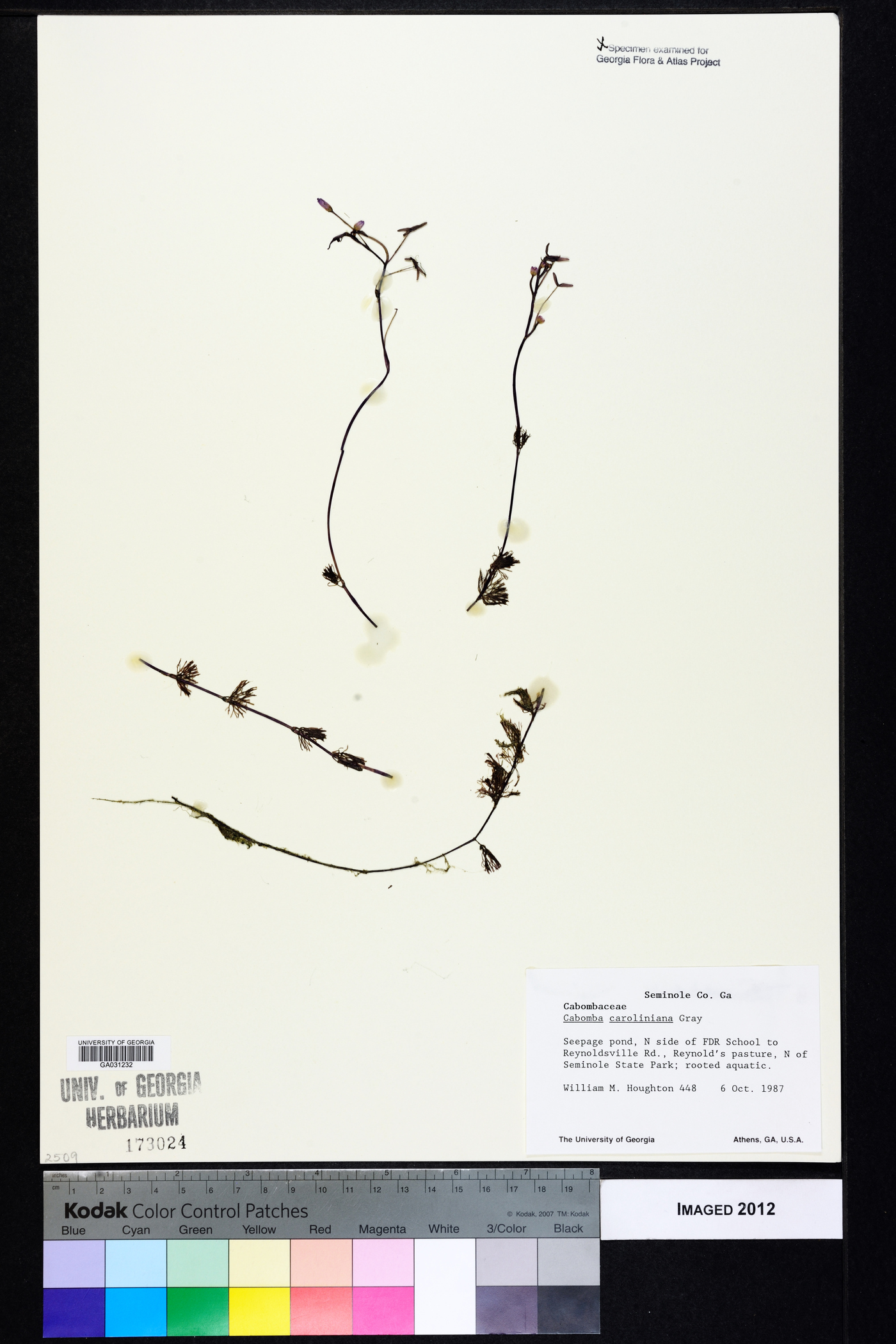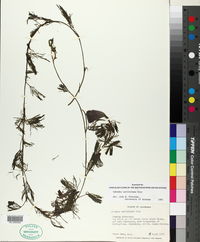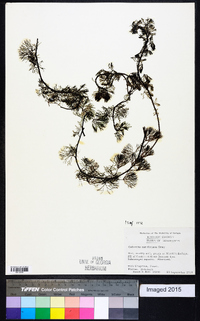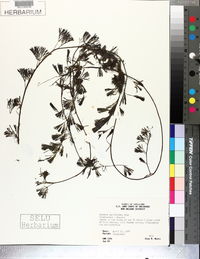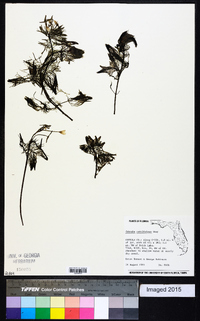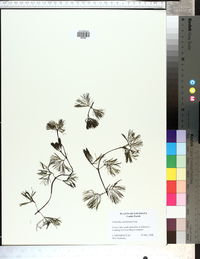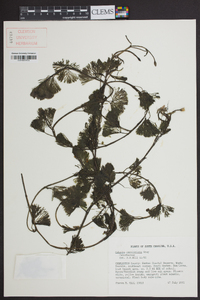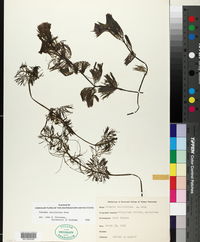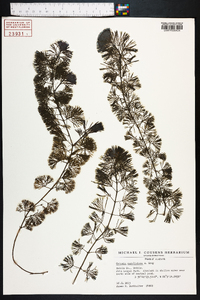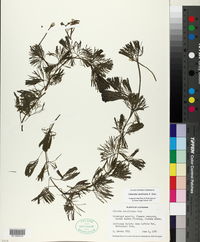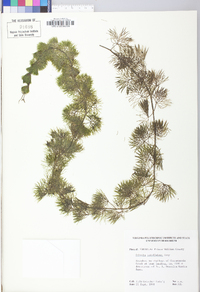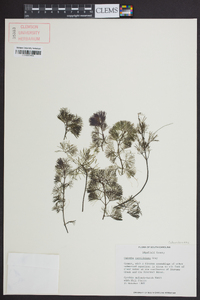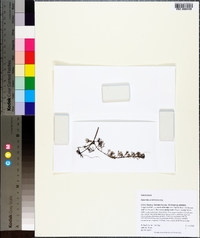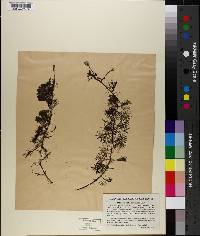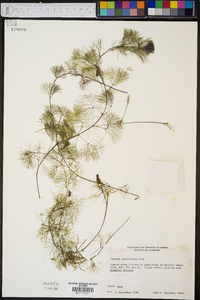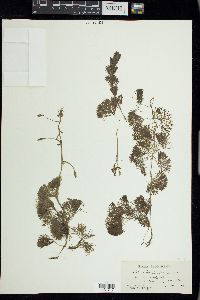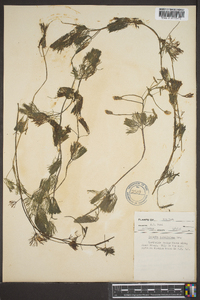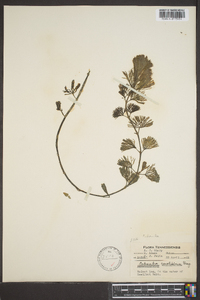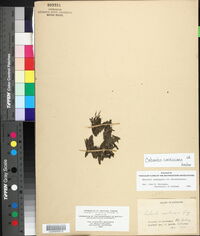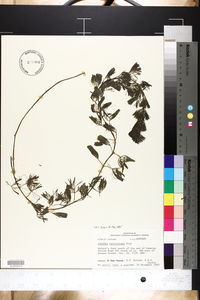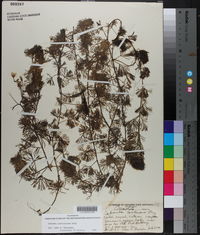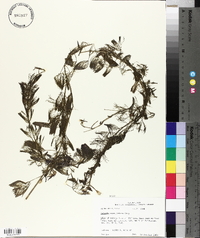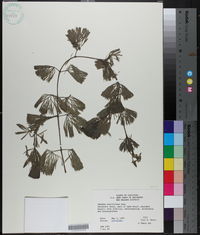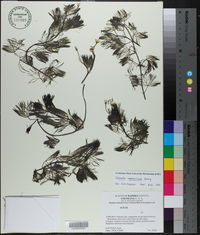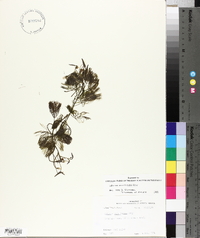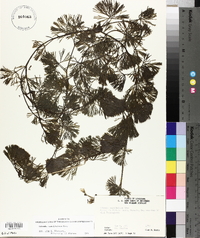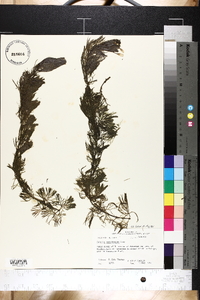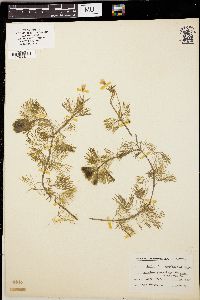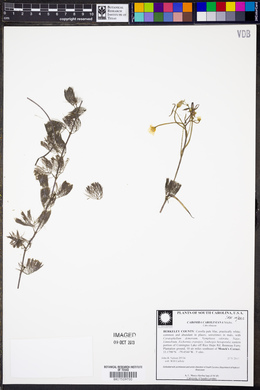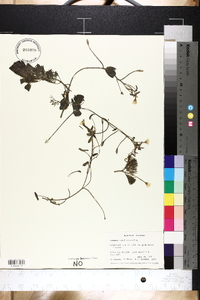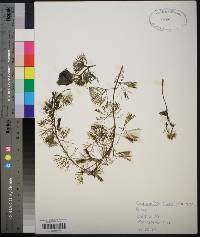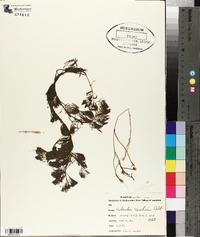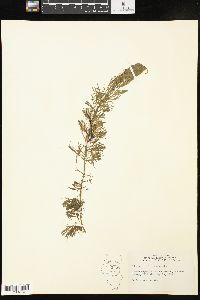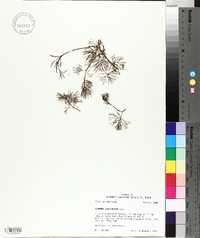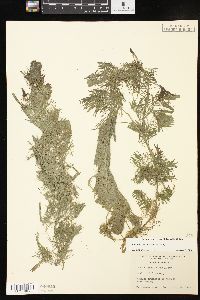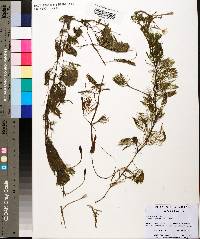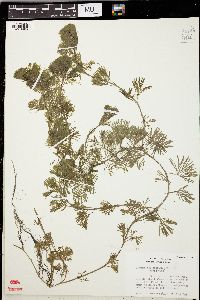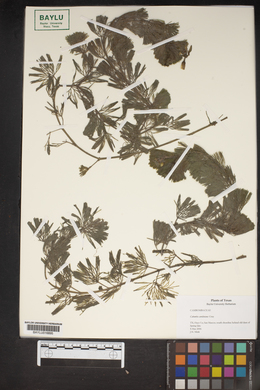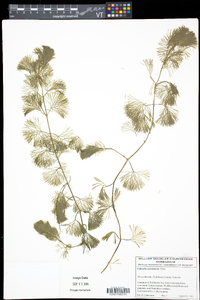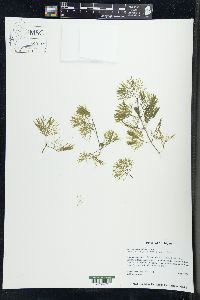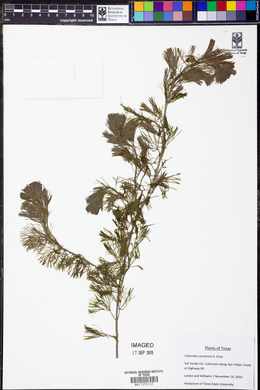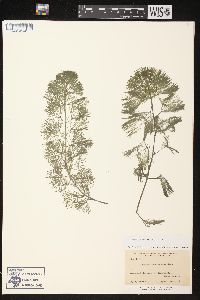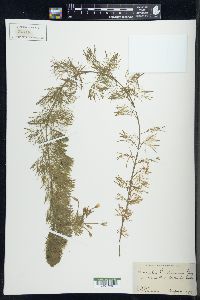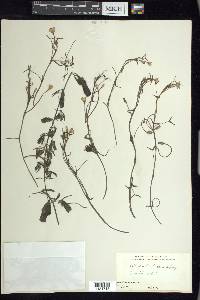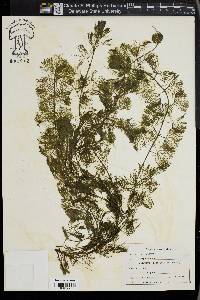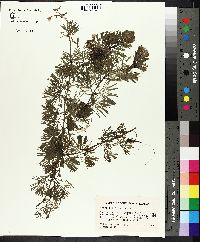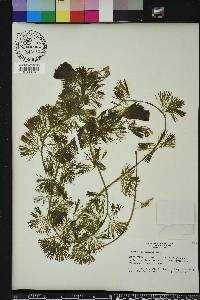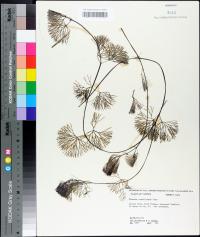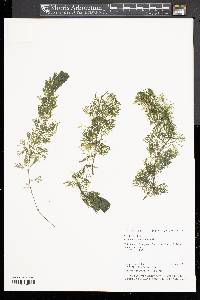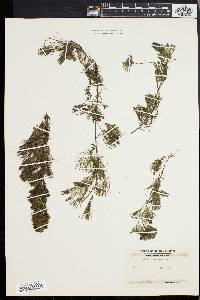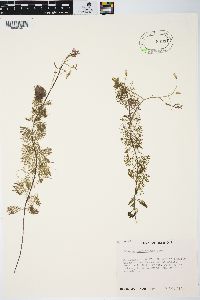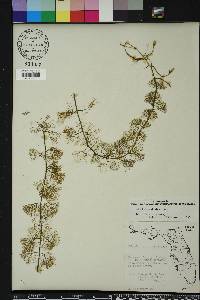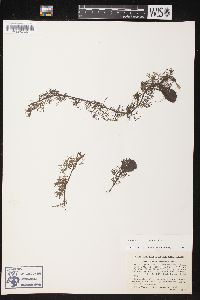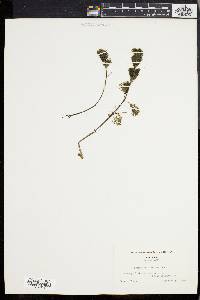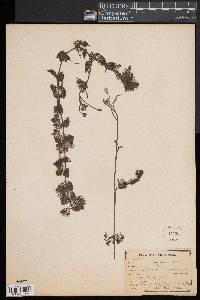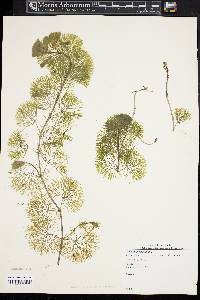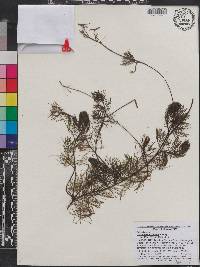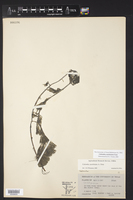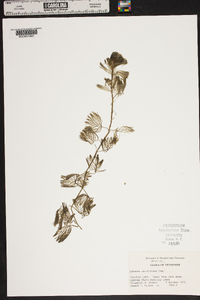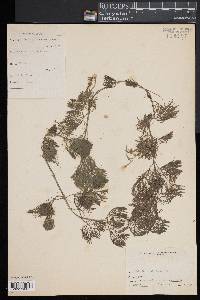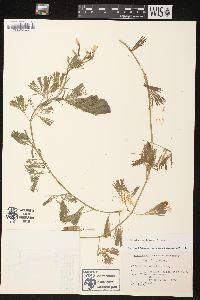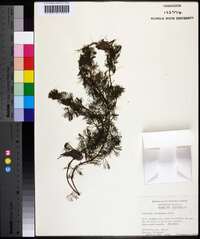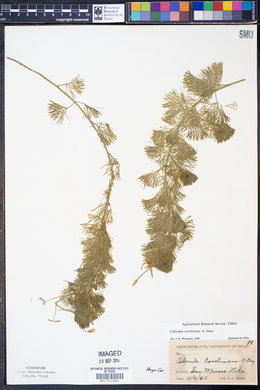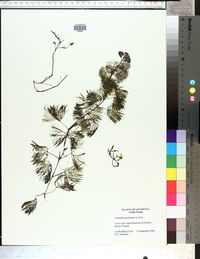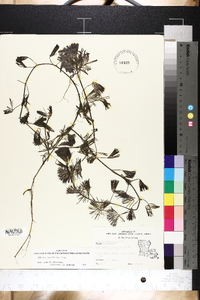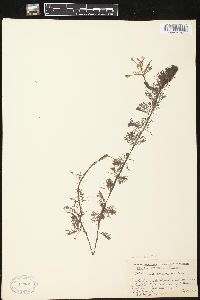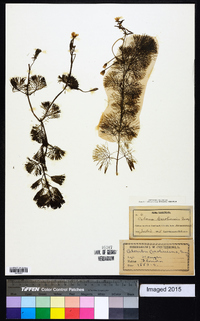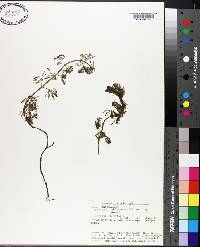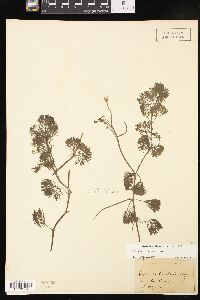
|
|
|
|
Family: Cabombaceae
Carolina Fanwort
|
Submersed leaves: petiole to 4 cm; leaf blade 1-3.5 × 1.5-5.5 cm, terminal segments 3-200, linear to slightly spatulate, to 1.8 mm wide. Floating leaves: blade 0.6-3 cm × 1-4 mm, margins entire or notched to sagittate at base. Flowers 6-15 mm diam.; sepals white to purplish [yellow] or with purple-tinged margins, 5-12 × 2-7 mm; petals colored as sepals but with proximal, yellow, nectar-bearing auricles, 4-12 × 2-5 mm, apex broadly obtuse or notched; stamens 3-6, mostly 6; pistils 2-4, mostly 3, divergent at maturity; ovules 3. Fruits 4-7 mm. Seeds 1-3, 1.5-3 × 1-1.5 mm, tubercles in 4 longitudinal rows. 2 n = ca. 78, ca. 104. Flowering late spring-early fall, earlier and later further south. Acidic to alkaline ponds, lakes, pools in marshes, rivers, streams, ditches, canals, and reservoirs; 0-300 m; Ont.; Ala., Ark., Conn., D.C., Fla., Ga., Ill., Ind., Ky., La., Md., Mass., Mich., Miss., Mo., N.H., N.J., N.Y., N.C., Ohio, Okla., Oreg., Pa., R.I., S.C., Tenn., Tex., Va.; s South America. Cabomba caroliniana , an important aquarium plant, is introduced in Oregon and probably in the northern part of its range where it is uncommon in several states. Formerly known from Kansas, it is thought to be extirpated there now. Although Delaware and West Virginia lie within the mapped area, I know of no collections from those states. In New England and parts of southeast United States, it is sometimes an aggressive weed. In parts of the southeastern United States, plants with purple-tinted flowers, possibly a response to some environmental factor, have been treated as Cabomba caroliniana var. pulcherrima . South American plants with yellow flowers have been called C . caroliniana var. flavida O/rgaard. The submersed leaves of Cabomba caroliniana are similar in form to those of Limnophila (Scrophulariaceae; introduced in southeastern United States). The latter has whorled leaves in contrast to the opposite leaves of Cabomba .
Stem to 2 m, branched; submersed lvs rotund, 2-5 cm wide, on petioles 1-3 cm; floating lvs few and small, linear-elliptic, 6-20 mm, commonly slightly constricted at the middle, often bifid at one end; peduncles 3-10 cm; sep and pet 6-12 mm, white with yellow base, the pet auriculate near the base; stamens 6; 2n=24. Ponds and quiet streams; N.J. to O., s. Mich., and Mo., s. to Fla. and Tex., and occasionally intr. farther north, as in Mass. and N.Y. Gleason, Henry A. & Cronquist, Arthur J. 1991. Manual of vascular plants of northeastern United States and adjacent Canada. lxxv + 910 pp. ©The New York Botanical Garden. All rights reserved. Used by permission. From Flora of Indiana (1940) by Charles C. Deam This species was reported by Schneck in 1876 as common in the deeper ponds of the Lower Wabash Valley. Ridgway (Amer. Nat. 6: 726. 1872) tells of a journey which he and Dr. J. Schneck made to Foote's Pond in Gibson County in September, 1871. He says: "Little, yellow, star-like flowers resting on the surface of the water, with their cypress-like leaves submerged, were found to be the Cabomba caroliniana." While there is no specimen, I believe we can assume the determination to be correct because there is no other aquatic in flower at that time of the year with which it could be confused. The species is, no doubt, extinct in Indiana. I have visited Foote's Pond several times and I have never seen it and I revisited it during the drought of 1930 and 1931 when it was dry for two years. I visited other deep ponds in the Lower Wabash Valley at the same time and they were also dry. The drought probably killed many other species there. ...... Indiana Coefficient of Conservatism: C = 2 Wetland Indicator Status: OBL |
|
|
|
This project was made possible in part by the Institute of Museum and Library Services [MG-70-19-0057-19].
Powered by Symbiota

